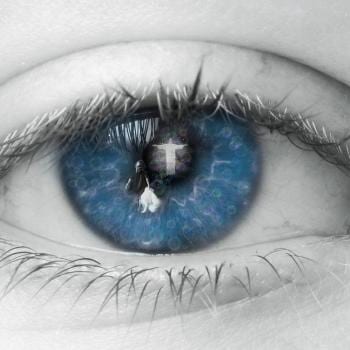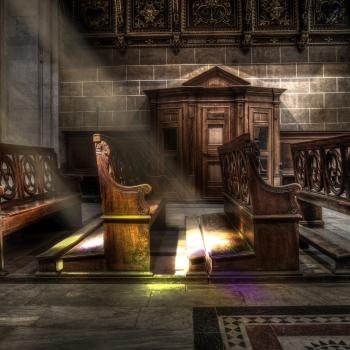
We think of pregnancy-related deaths as a problem that existed back in the “olden days,” but maternal mortality is still a major issue today. In fact, maternal mortality rates in the U.S. are rising. According to the CDC, about 700 women die from pregnancy or delivery related complications each year. Black women are especially at danger in the U.S.
This week, a link to an NBC news story has been shared around my social media feeds: U.S. is the most dangerous place to give birth in the developed world. It’s a shocking headline, and it’s true.
“Women in the United States are more likely to die from childbirth or pregnancy-related causes than other women in the developed world. More details are needed to better understand the actual causes of death, but research suggests that half of these deaths are preventable. Racial disparities persist. The risk of pregnancy-related deaths for black women is 3 to 4 times higher than those of white women.” – CDC
It shouldn’t be this dangerous to be pregnant or give birth in the U.S. Other countries have much lower maternal mortality rates than us.
“A mother giving birth in the U.S. is about three times as likely to die as a mother in Britain and Canada.” – Renee Montagne, NPR, For Every Woman Who Dies In Childbirth In The U.S., 70 More Come Close
Countries with a better maternal mortality rate than the United States of America:
Greece, Iceland, Poland, Finland, Czechia, Kuwait, Italy, Sweden, Belarus, Austria, Norway, Spain, Switzerland, Japan, Israel, Denmark, Germany, Slovakia, Australia, United Arab Emirates, Cyprus, Montenegro, Netherlands, Canada, Belgium, France, Croatia, Macedonia, Ireland, Malta, Slovenia, United Kingdom, Libya, Estonia, Luxembourg, Portugal, Singapore, Lithuania, Bulgaria, South Korea, New Zealand, Bosnia and Herzegovina, Kazakhstan, Saudi Arabia, and Qatar. (Source: CIA World Factbook)
We must do a better job of caring for the lives of mothers in our country. Catholics, especially, have a call to support and care for mothers. If we love Mary, how can we not love all mothers? If we love life, how can we not protect the lives of all mothers?
The reality is pregnancy is still dangerous for women in this country. There are significant risks. It’s important we acknowledge that before we can hope to change it.
What can we do?
First, we need to look at some of the things we know contribute to maternal mortality.
It’s important for pregnant women, and women in their child-bearing years, to have access to quality healthcare. Regular check-ups throughout pregnancy can identify issues like pre-eclampsia, which can be fatal to both mother and child if not addressed in time.
Women who live in rural areas might have to drive an hour or more to reach a hospital. During both of my high-risk pregnancies, I lived about an hour from our nearest hospital. It was difficult to make it to the hospital every time I went into preterm labor, and since my insurance had a high deductible, it was also very expensive.
Of course, that leads us to another issue: poverty. Pregnant women in poverty don’t have the luxury of being picky about which doctor they go to. If they wind up with a bad doctor, but it’s the only doctor in their area they can afford or is covered by their health plan, they’re stuck. Affordable healthcare that doesn’t box pregnant women into using only certain clinics or doctors would go a long way toward preventing maternal mortality.
We need doctors to take women seriously when they say something isn’t right. Female pain is often dismissed as “all in our heads” or a symptom of female hysteria. Medical professionals need to get rid of this bias and believe women when they report severe pain or severe bleeding during or after giving birth. There’s normal birth-related pain, and then there’s there-is-a-serious-problem-here birth-related pain. Not all pain is normal. Not all post-birth bleeding is normal.
We also can’t ignore how many more Black women die than any other ethnicity. There is obviously an issue here. It’s very likely our cultural stereotypes about “strong, Black women” are preventing some medical professionals from taking these women seriously when they report unusual pain or bleeding after giving birth.
Some women have medical conditions that make it more dangerous to carry a baby or give birth. Not every woman can safely make it through pregnancy, and we need to acknowledge that. I’ve seen a lot of misinformation about this within some Christian circles that promote large families. Some people like to pretend pregnancy and childbirth is perfect safe for all women. It’s not.
Let’s not forget about the women who almost lose their life. Many women suffer serious issues and come close to dying due to pregnancy and childbirth-related complications. These women survive, but these complications can be life-altering.
In 2014, more than 50,000 women experienced these near-misses. Again, this number has been trending up, not down. The rate of emergency hysterectomies performed to save the mother’s life, most often due to uncontrollable hemorrhaging, has increased 55% from 1993 to 2014.
We can do better than this, but until we make some major changes to our medical and non-medical cultures, pregnancy and birth will remain risky for women in the United States, especially if those women are poor and/or Black. That’s unacceptable.
More Sacred Forms posts
Pain-free First-time Sex
Sign up with your email or follow me on Twitter or Facebook to keep up with new posts.












